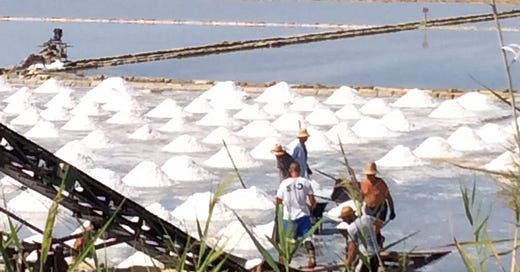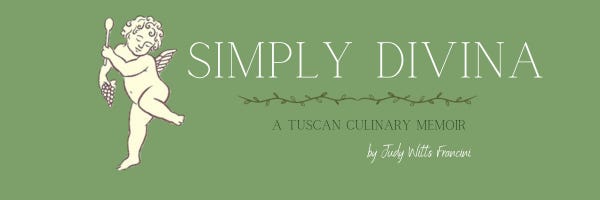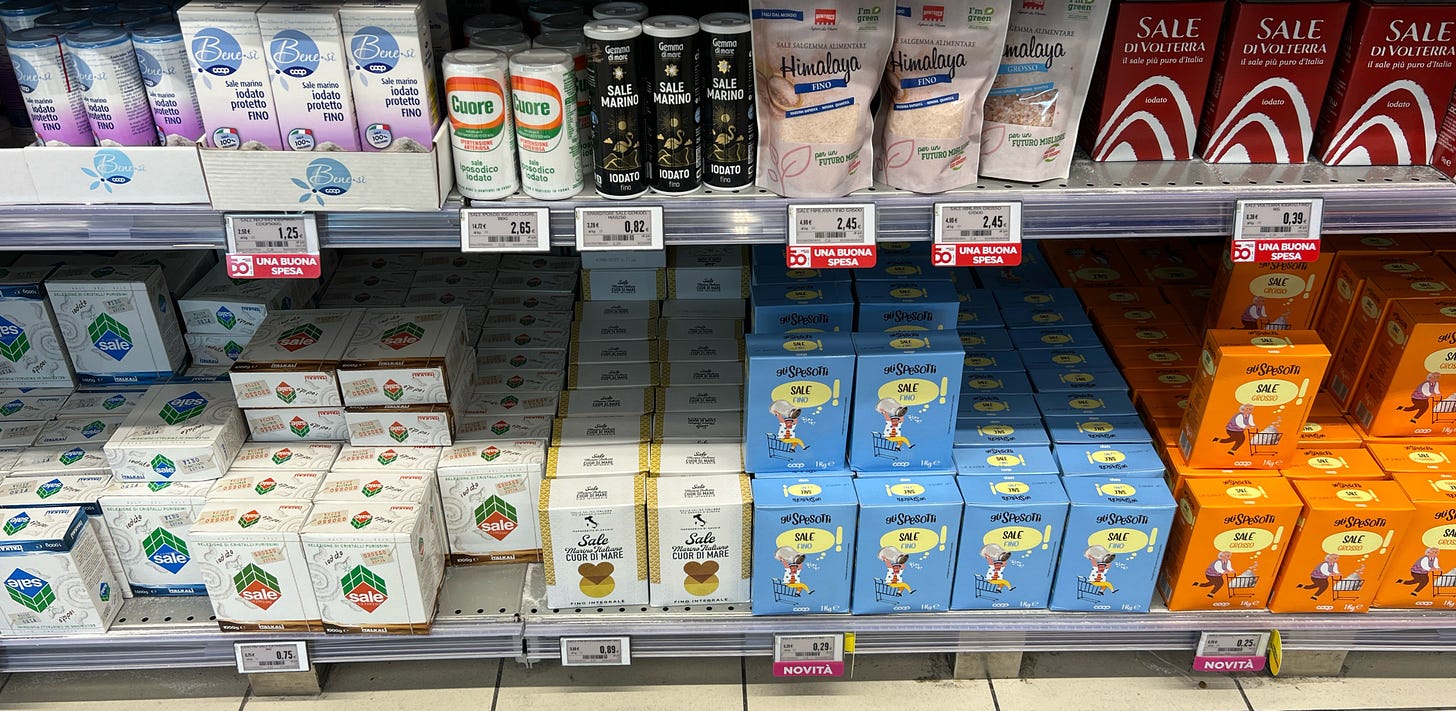La Dispensa is part of my memoir series, Simply Divina- Becoming Italian one recipe at a time. To get all the recipes and access to the archives, consider becoming a paid subscriber.
My ebook is also included as well as the 12 guides to the Markets of Italy.
I grew up with a dad who had a heart condition, which meant a low-salt diet. I think people confuse low salt with no salt. When you eat many processed and prepared foods, everything has salt in it: bread, cereal, soups, sandwich meats, frozen foods, and more. It’s easy to see how we consume too much salt without even salting food at the table.
Moving to Tuscany and buying fresh food changed my cooking. I needed to add salt. Sometimes a dish tastes a little flat and all you need is to add a little more salt to make it sparkle.
Here is my choice at my local grocery store, the COOP.
Most Italian kitchens always have two sizes of salt, Sale Grosso and Sale Fino.
Sale Grosso is the larger crystal used to season cooking water for pasta, vegetables, etc. Sale Fine is table salt. We also can buy a “finishing salt”, which is the first harvest of sea salt and used at the table.
The area around us was all underwater in prehistoric times. They find oyster shells and dinosaur bones in the land around my home.
Salt/Sale has always been a valuable item, often causing wars. You can die faster from dehydration than from starvation. The Roman armies paid their soldiers with bags of salt and their pay; the word salary comes from salaria. The stronger army wins.
If you control the salt, you had the power.
There is a famous saying in Florence-
“It’s better to have a dead person at your doorstep than a Pisano at your door”.
On the coast, Pisa controlled goods arriving on the Arno River to the port of Florence. They taxed salt, so it was mainly for the rich. The local bread, which was for everyone, is made unsalted. Florentines salt the food,perhaps heavily if you are not used to it, and the bread is always eaten with something, not on its own, so it balances it out.





